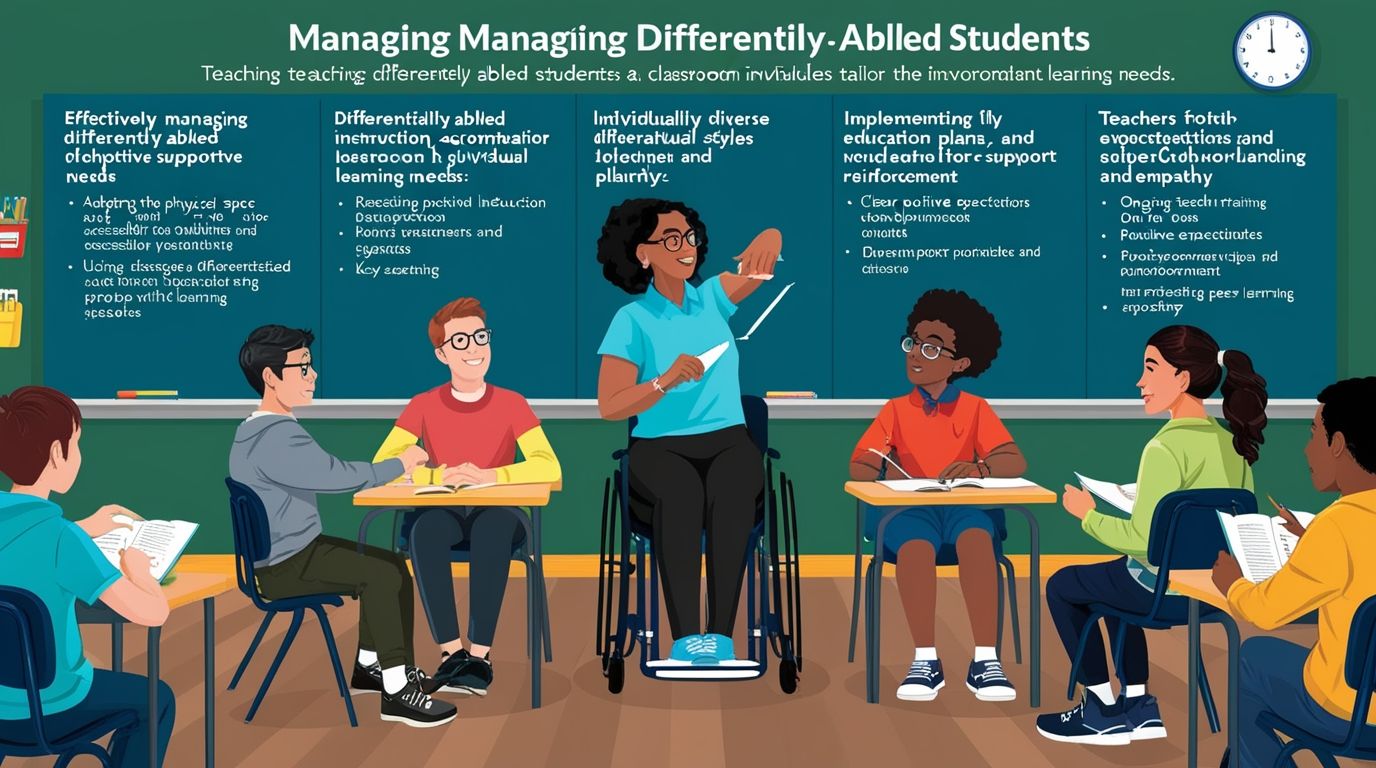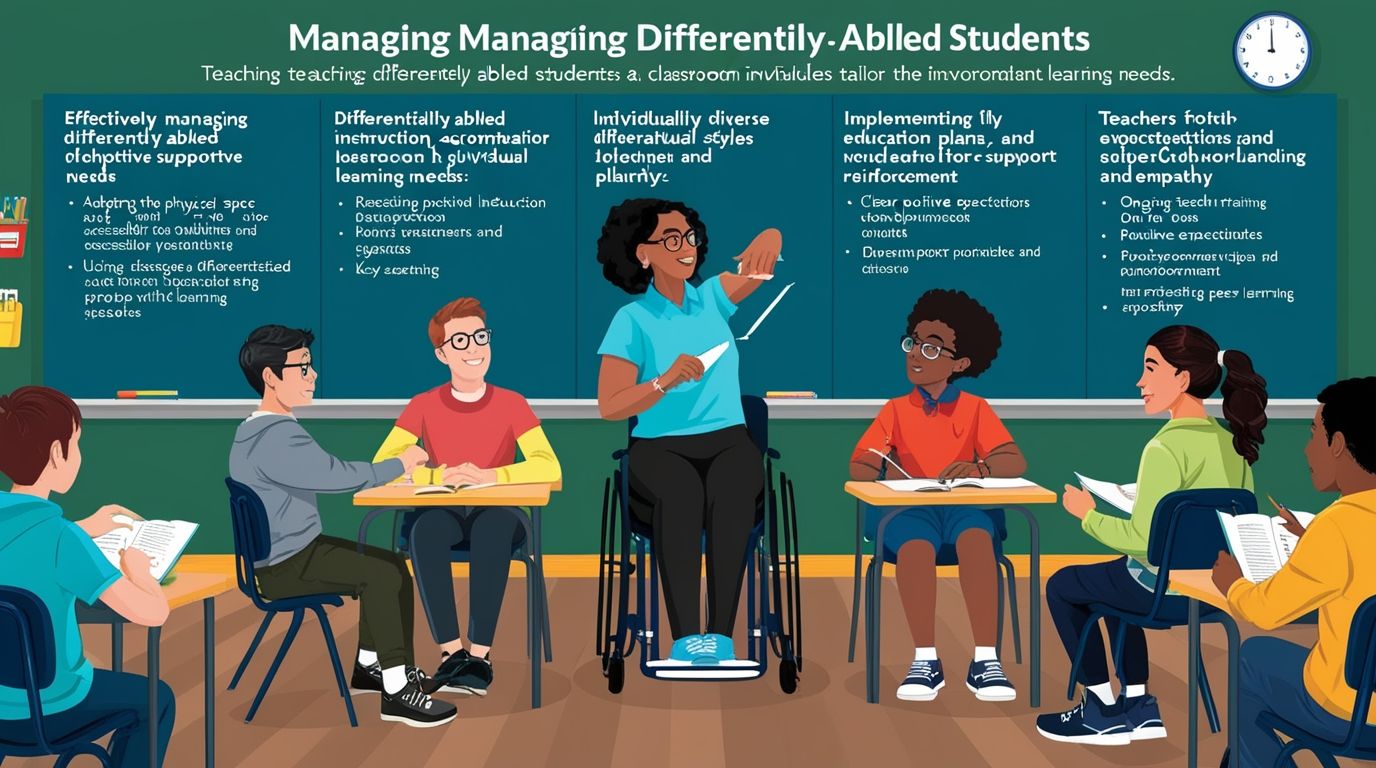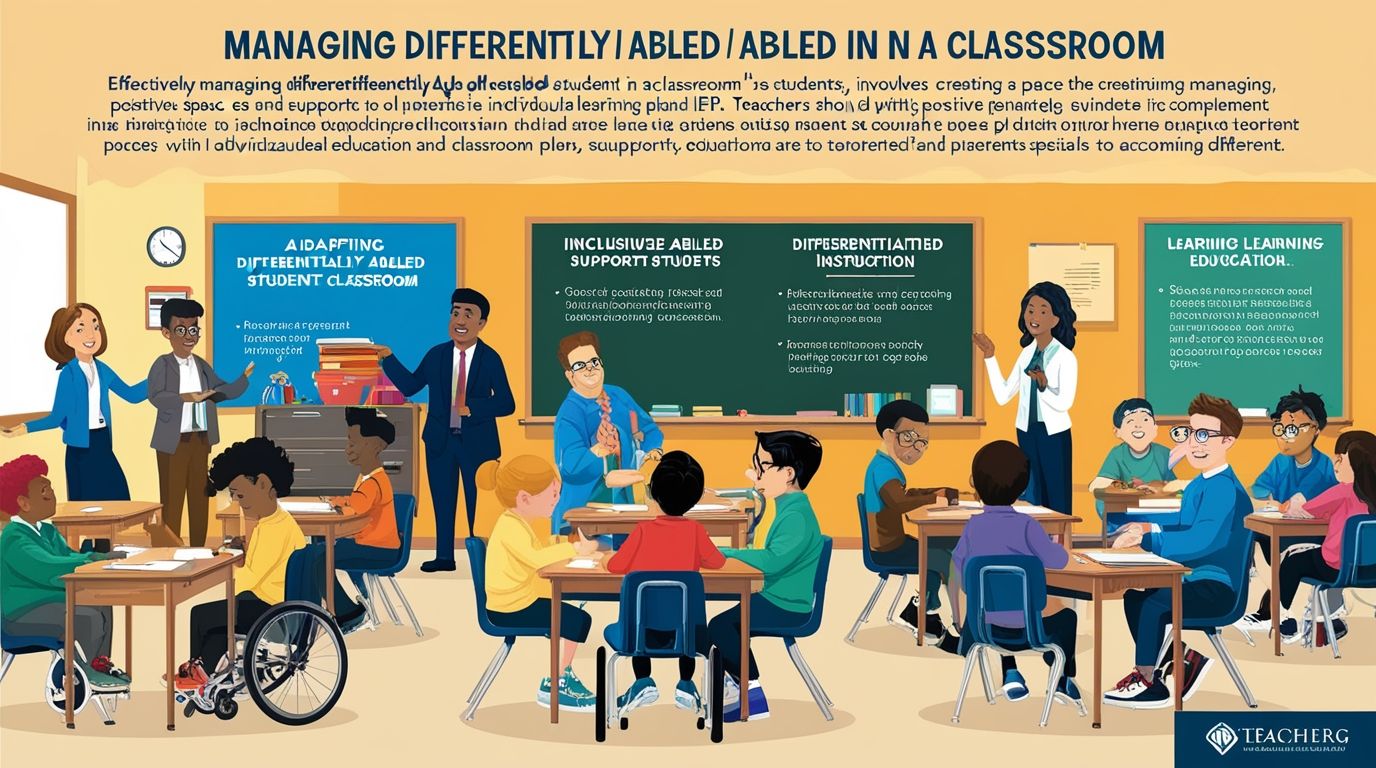Introduction
Managing Special Students in a Classroom, Inclusive education has become an essential element in modern educational systems, emphasizing the need to cater to the diverse learning needs of students, including those who are disable. The presence of such students in mainstream classrooms presents both challenges and opportunities for teachers, students, and the overall learning environment. Effective classroom management strategies are critical to ensure that these students not only integrate but thrive within inclusive settings. This article delves into the strategies teachers can adopt to manage disable students in classrooms while maintaining an optimal learning environment for all.
Understanding Different Abilities
Special students come with a wide range of needs, including but not limited to:
- Physical disabilities (e.g., mobility issues, visual or hearing impairments)
- Cognitive or learning disabilities (e.g., dyslexia, ADHD, intellectual disabilities)
- Emotional and behavioral disorders (e.g., autism spectrum disorder, anxiety disorders)
- Sensory processing disorders (e.g., hypersensitivity to sound or light)
Understanding the unique needs of each student is the first step in managing their inclusion effectively. This requires collaboration between teachers, special educators, and the student’s family to create a comprehensive learning plan tailored to each individual’s abilities and challenges.
Classroom Environment Adaptations
- Physical Accessibility
The classroom should be physically accessible to students with mobility issues or visual impairments. This might include:
- Wheelchair ramps and accessible seating
- Clear pathways free from obstacles
- Braille labels on classroom materials
- Specialized technology like audio-assistive devices or screen readers
Physical adaptations must ensure that students can move around and participate in classroom activities without feeling excluded or limited.
- Sensory-friendly Spaces
For students with sensory processing disorders or autism, the classroom environment can sometimes be overwhelming. Teachers can create sensory-friendly spaces by:
- Reducing noise levels (e.g., through noise-canceling headphones or quiet zones)
- Minimizing bright or flickering lights
- Offering “sensory breaks” where students can step out of the classroom if they feel overstimulated
A flexible seating arrangement can also help by allowing students to choose spaces that make them feel comfortable and able to focus.

Individualized Education Programs (IEPs)
IEPs are personalized plans developed to support the educational and developmental goals of such students. Teachers play a pivotal role in implementing IEPs by:
- Adapting lesson plans to accommodate different learning styles (e.g., using visual aids for students with learning disabilities or simplified instructions for those with cognitive impairments)
- Setting realistic and attainable goals that align with the student’s abilities
- Regularly reviewing and adjusting the plan as the student progresses
IEPs should be developed collaboratively with special educators, therapists, and parents to ensure that the student’s needs are comprehensively addressed.
Differentiated Instruction
Differentiated instruction refers to tailoring teaching methods and content to meet the diverse needs of all students in a classroom. For them students, this might involve:
- Multisensory learning: Using a combination of auditory, visual, and kinesthetic activities can help students with various learning disabilities engage with the material. For example, a math lesson could involve visual aids like graphs, hands-on manipulatives like blocks, and verbal explanations.
- Varying assessment methods: Not all students can demonstrate their understanding through traditional tests or written assignments. Oral presentations, creative projects, or even verbal quizzes might be more suitable for some students.
- Flexible pacing: Some students may require more time to grasp certain concepts. Offering extended deadlines or breaking down tasks into smaller, manageable steps can help alleviate stress and ensure progress.
Classroom Behavior Management
Behavioral challenges are common among students with emotional or behavioral disorders, such as ADHD or autism. Teachers can manage these challenges through proactive and supportive strategies.
- Clear Expectations and Routines
These students often benefit from clear and consistent expectations. Establishing routines can help reduce anxiety and behavioral outbursts. Visual schedules, checklists, and visual cues can be helpful tools to maintain structure in the classroom.
- Positive Reinforcement
Rewarding positive behavior can be more effective than punishing negative behavior. Implementing a reward system that acknowledges the student’s progress, no matter how small, can foster self-esteem and motivation. However, rewards should be personalized and meaningful to the student, whether verbal praise, tokens, or preferred activities.
- Calm and Patience
It’s essential to remain calm and patient when handling behavioral challenges. Many students with emotional or behavioral disorders may struggle with impulse control, social interactions, or expressing emotions appropriately. Teachers should provide space for students to self-regulate, offering calm-down corners or allowing short breaks.
- Collaboration with Behavioral Specialists
In more complex cases, behavioral specialists or therapists can offer guidance on strategies that address specific behavioral challenges. Collaborating with professionals ensures that the interventions in place are research-based and designed for the individual’s needs.
Peer Support and Collaboration
Inclusion involves not only accommodating these students but also fostering an environment where they feel welcomed and respected by their peers.
- Promoting Empathy and Understanding
Teachers can create an inclusive atmosphere by educating the class about different abilities, emphasizing the importance of empathy and kindness. Teaching students to appreciate differences while recognizing similarities can break down social barriers and encourage collaboration.
- Peer Buddies and Cooperative Learning
Assigning peer buddies to these students can help them navigate social and academic challenges more effectively. Cooperative learning activities, where students work in small groups, also encourage peer support and can help build positive relationships between these students and their classmates.
- Inclusive Extracurricular Activities
Ensuring that students are included in extracurricular activities, such as sports, arts, or clubs, reinforces the sense of belonging. Teachers can advocate for adaptations in these activities to ensure full participation, whether through modified rules or accessible equipment.

Teacher Training and Professional Development
Successfully managing a classroom with these students requires continuous professional development. Teachers should seek out training in areas such as:
- Inclusive teaching practices
- Using assistive technologies in the classroom
- Collaboration with special educators and therapists
Professional development helps teachers remain up-to-date with best practices in inclusive education, ensuring that they are well-equipped to meet the evolving needs of their students.
Parental and Community Involvement
Parents play a crucial role in the success of these students in the classroom. Teachers should maintain open communication with parents, keeping them informed of their child’s progress and any challenges. Parent-teacher meetings should involve discussions about IEP goals, classroom behavior, and how to extend learning and support at home.
Moreover, involving the broader community, such as disability organizations or local advocacy groups, can provide additional resources and support to both the teacher and the student. These organizations can offer training, workshops, and specialized equipment that enhance the learning experience for these students.
Conclusion
Effectively managing students in a classroom setting requires a multifaceted approach that includes adapting the physical environment, implementing individualized education plans, and fostering a culture of empathy and inclusion among all students. Teachers must be flexible, patient, and proactive in their efforts, continually seeking out professional development opportunities and collaborating with specialists and parents. By embracing these strategies, educators can create an inclusive learning environment that not only accommodates but celebrates the diverse abilities of every student.
References:
- Booth, T., & Ainscow, M. (2016). The Index for Inclusion: Developing Learning and Participation in Schools. Centre for Studies on Inclusive Education.
- Westwood, P. (2018). Commonsense Methods for Children with Special Educational Needs. Routledge.
- Salend, S. J. (2011). Creating Inclusive Classrooms: Effective and Reflective Practices. Pearson.
- Florian, L., & Black-Hawkins, K. (2011). Exploring Inclusive Pedagogy. Cambridge University Press.

5 thoughts on “Managing Special Students in a Classroom”
Comments are closed.